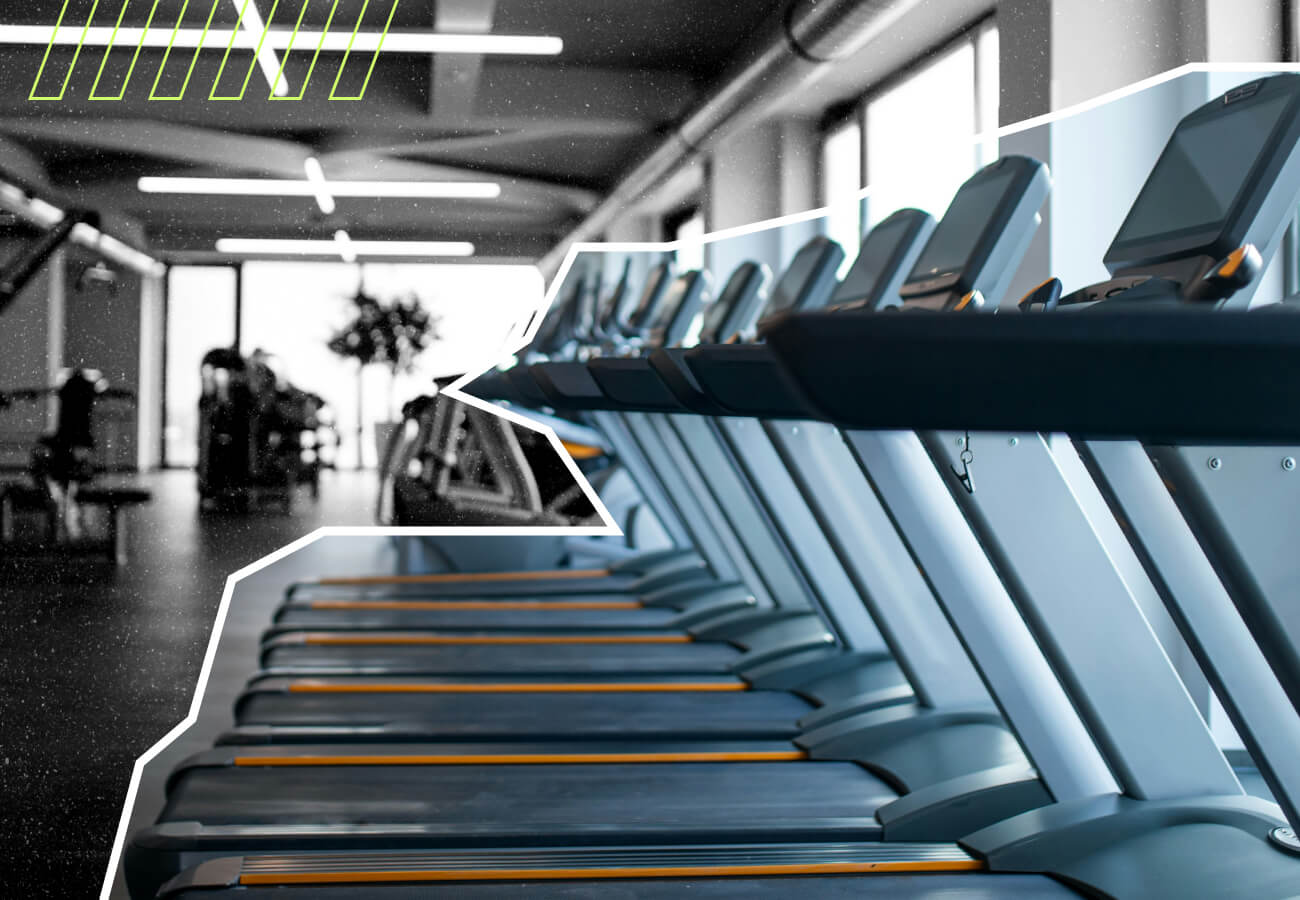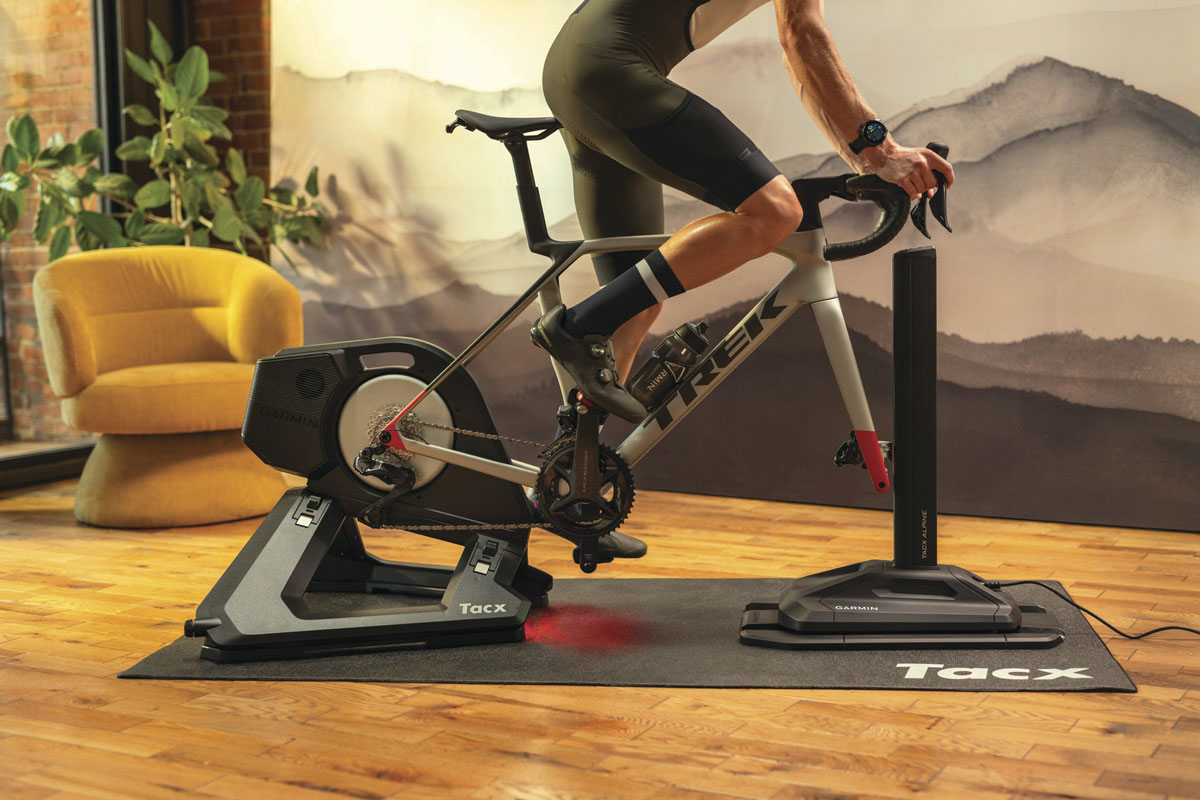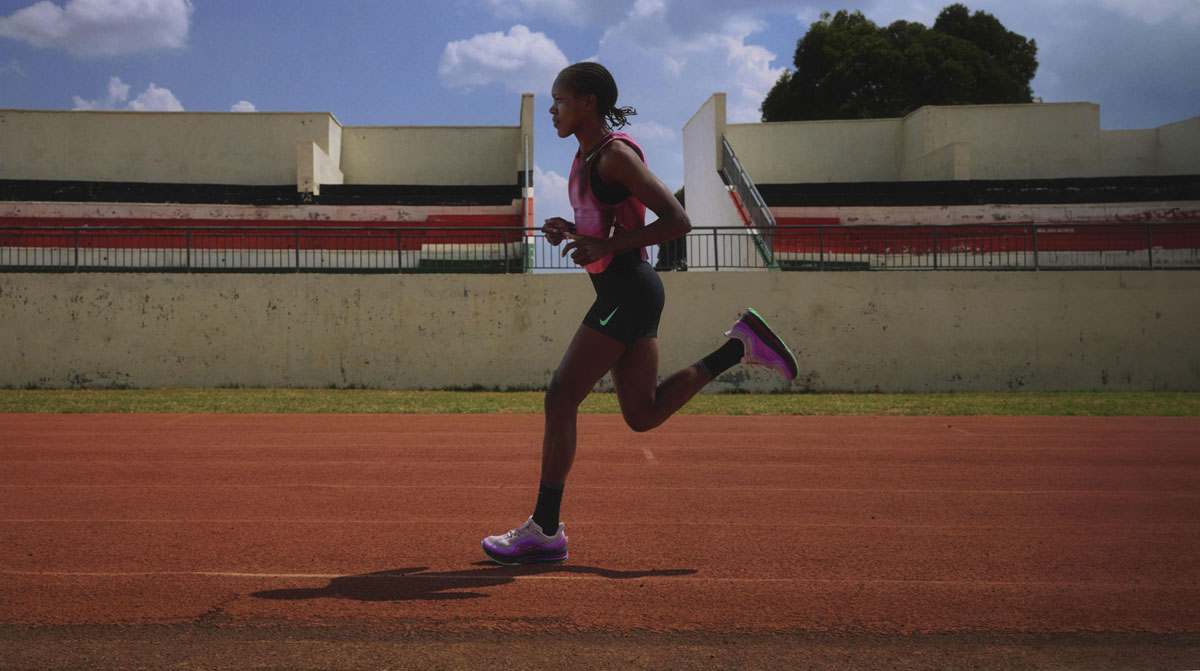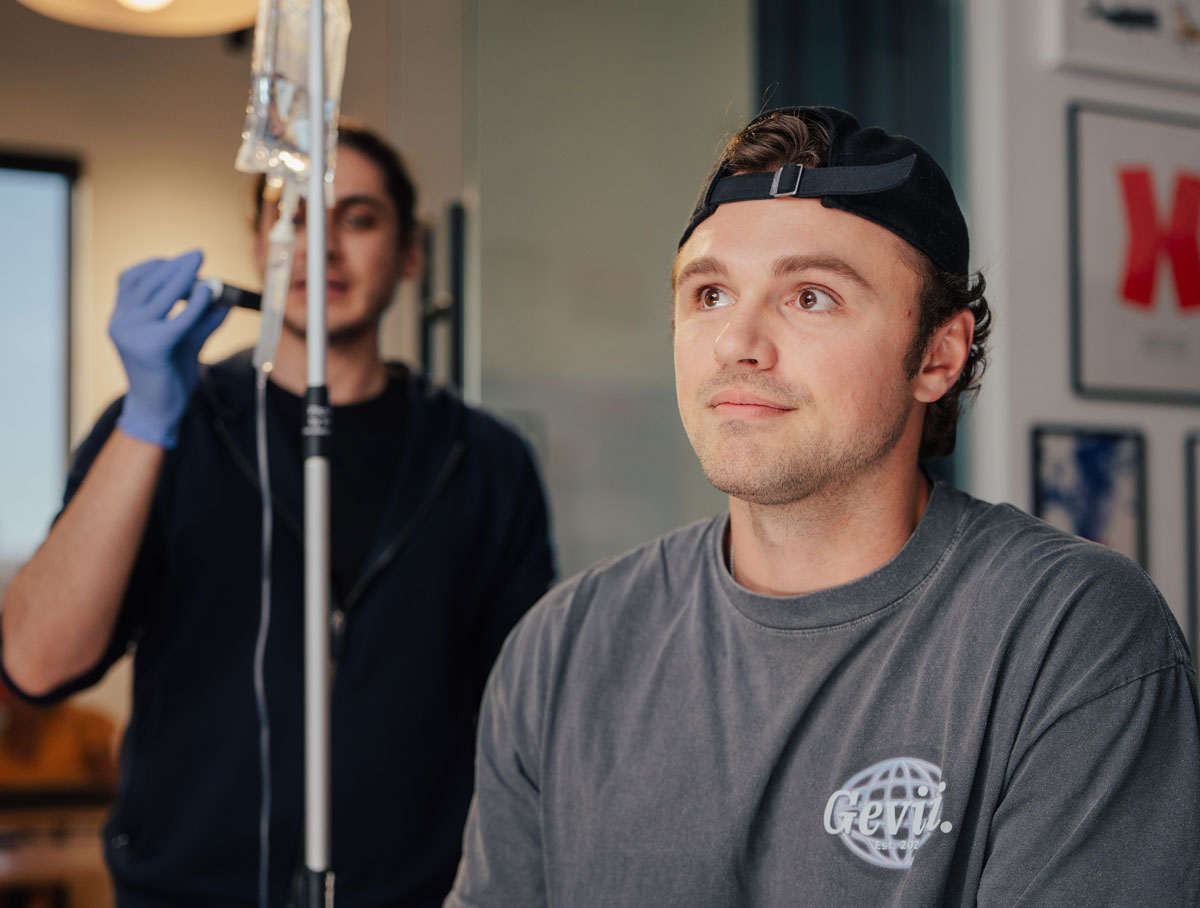What are the benefits of walking backwards on a treadmill? Experts explain

Social media feeds like TikTok and Instagram aren’t always the best place to get legitimate health and fitness advice, but those influencers you’ve seen walking backwards on a treadmill recently? Well, they might actually be onto something.
Walking backwards on a treadmill, also called retro-walking or reverse walking, is exactly what it sounds like. Instead of the usual forward march, individuals back it up and walk in reverse. While it may seem a little random — and even silly — the trend has exploded on social media, with the hashtag #walkingbackwards generating over 15 million views.
The momentum doesn’t stop there: As of April 2024, you’ll be able to buy the world’s first treadmill specifically designed for backward walking and backward running. Appropriately named The Backward Treadmill, the fold-up device makes it easy to incorporate backward movement into your routine from your own home.
Retro-walking may not look like a particularly intense workout or calorie burner, it’s a valid form of cardio and has some serious health benefits. To help you make the most of this viral trend, we broke down the basics on what reverse walking is, and how you can incorporate it into your own wellness routine.
The potential benefits of walking backwards
In short: Walking backwards on a treadmill activates different muscle groups to walking forwards, enhances joint mobility, increases strength, particularly in the quadriceps, and improves overall balance, and stability.
Amy Hooper, doctor of physical therapy at East Side Movement Company in Austin, Texas, is a big fan of retro-walking and no stranger to incorporating it into her clients’ plans of care when appropriate. She tends to recommend retro-walking to people with knee, hip, or low back pain, as well as to those with ankle stiffness. She’s even utilized the method herself — most notably after finishing a half marathon earlier this year, when her hip flexors were feeling especially tight.
“Walking backwards on a treadmill has several benefits and can be helpful in shifting patterns of muscle tension and decreasing pain,” Hooper explains. “Backward walking can be helpful because it’s mechanically and neurologically similar to walking forward, but is different enough that it asks for different muscles to activate, and can sometimes decrease pain with normal walking.”
In terms of major differences, walking backwards asks for more hamstring and glute activation compared to forward walking, and can help individuals decrease tension in their hip flexors, low back, and quads. retro-walking also forces our quadriceps muscle, or the muscle on the front of our thigh, to work differently than when forward walking, and can increase ankle and calf activity.
Additionally, studies show that retro-walking can help improve balance and stability, enhance heart function, and even decrease pain.
Below, we’ve outlined the major benefits of backward treadmill walking.
Improves hamstring and glute activation
During the typical gait cycle, your hip flexors work with your hamstrings to bend your knee and clear your foot as you take a step forward. Before that can happen, your glutes work to extend your leg behind you.
However, most humans lack full hip extension for a variety of reasons, including constant use of our hip flexors during forward walking, and sitting for long periods of time.
By reversing the gait cycle and walking backwards, the hamstrings and glutes work as the hip flexor is in a lengthened position, allowing the glutes and hamstrings to do the bulk of the work, and releasing tension in the hip flexors.
Increases knee and ankle range of motion
Walking backwards can benefit both your knee and ankle range of motion. retro-walking forces individuals to completely straighten their knees as they move from their toes to their heel to advance backwards, which can help improve knee range of motion — especially into extension.
Additionally, walking backwards forces individuals to land on their forefoot and roll to their heel, whereas with forward walking, it’s typical to land on the heel and roll to the foot. This motion forces your ankle into dorsiflexion (or toes pointed up), which can increase ankle mobility.
Builds quadriceps strength
Multiple studies have found that backwards walking requires greater quadriceps activation compared to forward walking. An older study reported that participants used 21% of their maximal quadriceps strength during backwards walking, compared to just 9% during forward walking. Increased quadriceps activation can lead to better quadriceps function, potential strength gains, and even decreased pain levels. A 2019 study found that a six week retro-walking program improved quadriceps muscle strength and decreased pain in individuals with knee osteoarthritis.
Decreases knee and low back pain
Retro-walking can be particularly effective for people with anterior knee pain, or patellofemoral syndrome, and knee osteoarthritis, according to Lyssa Cleary, a physical therapist at Athletic Lab Physical Therapy and Performance Training in Santa Monica, California.
When walking forwards, the quadriceps work eccentrically (by lengthening the muscle), to absorb shock at the beginning and middle phases of the gait cycle as the knee bends, which can result in increased stress to the knee joint, Cleary explains. With backwards walking, the quadriceps work isometrically (without changing length) and concentrically (by shortening the muscle) to extend the knee, enabling individuals to work the quadriceps muscle without excessively stressing or compressing the knee joint.
Studies also show that when added to conventional exercises, retro-walking can help decrease low back pain and increase flexibility in individuals with low back pain. This may be due to the recruitment of lumbar extensor muscles, but more research is needed on the subject to fully discover its benefits.
Increases calf activation
During retro-walking, we initially contact the ground with our foot in plantarflexion, or the toes pointed down, Cleary explains. That biases the ankle joint to absorb most of the shock from the ground, causing our calf muscles to stabilize the ankle and play a larger role in the movement compared to forward walking.
Enhance balance, stability, and cardiopulmonary fitness
Multiple studies have explored the benefits retro-walking can have on balance and stability. A 2021 study found that individuals who walked backward on a treadmill in 30-minute increments over four weeks increased their balance, walking pace, and cardiopulmonary fitness. Of course, it’s important to note that the study participants were individuals who had all previously suffered a chronic stroke, meaning that the benefits may be less drastic for non-impaired individuals.
A 2004 study also found that walking backwards increased heart rate and VO2 max compared to forward walking at the same grade and pace. More current research is required to fully explore this connection.
Cardiopulmonary fitness refers to the health and efficiency of your heart, lungs, and circulatory system. It’s essentially how well your body can supply oxygen to the body’s muscles and organs during sustained physical activity. The better your cardiopulmonary fitness, the more efficiently your heart and lungs work together to provide your muscles with oxygen.
Potential risks and considerations
Although a treadmill generally provides a controlled environment for your workout, there’s always the potential for safety risks — especially since you don’t have eyes in the back of your head.
To avoid falling off the treadmill and injuring yourself, utilize the treadmill’s safety key, which typically clips to an item of your clothing and acts as a circuit breaker. If you fall or slip, the safety key automatically stops the treadmill.
Taking advantage of handrails, enlisting a spotter (like a friend or healthcare professional), and avoiding multitasking or distractions, like phones and TVs, are also good safety precautions.
Another risk of retro-walking, especially after surgery, is doing too much, too soon. Since backwards walking requires more effort from certain muscles, it’s important to recognize that your capability may not be as great as it currently is for forward walking. Like any new workout or training regime, the key is to start small and ramp up accordingly, based on your personal tolerance and goals.
Consult with your doctor or another healthcare professional before starting a backwards walking program, especially if you’ve recently had surgery or are experiencing pain with forward walking.
Is it right for you?
Interested in trying out this trend for yourself? You don’t need to be in pain or recovering from surgery to reap the benefits.
“In my opinion, anyone could benefit from walking backwards on a treadmill,” Hooper says. “Our bodies and nervous systems love variety and novelty in movement. It’s good for pain, good for decreasing tension, and good for our brains in general.”
While more athletic individuals tend to downplay walking, walking backwards or forwards is a great way to promote optimal recovery in our bodies and improve cardiovascular health, among other things, Hooper says.
Cleary also recommends retro-walking as a valuable cross training cardio workout that breaks up the repetitive movements associated with walking or running forward.
“Backwards walking is a way to engage in steady-state aerobic exercise, but add variety to how our muscles and joints are working,” she explains.
How to Get Started
retro-walking has its place in physical therapy and rehabilitation for those with injuries or recovering from a stroke or other neurological condition. But anyone can add retro-walking to their routine and reap the benefits.
Of course, like with any new workout program, it’s important to consider safety when getting started. While retro-walking is a low-impact and relatively safe form of movement, Cleary advises it’s best to add it into your routine incrementally.
She recommends incorporating shorter bursts of walking backwards into your regular walking routine to start introducing your muscles to a new movement, highlighting the ‘10 percent per week principle:’ Take the total amount of exercise time or mileage you’re typically doing per week, and add or change that exercise by no more than 10% per week.
So, if you’re already walking 30 minutes a day three times a week, start by adding one minute of walking backwards into every 10-minute interval, and building from there. While your body may be able to handle more than this, it’s a safe place to begin.
Start with a 0% incline and the slowest treadmill speed available, and ramp up gradually until you find a tolerable, conversational pace that works for you. While the ACSM Compendium of Physical Activities measures METS, or metabolic equivalents, earned while backwards walking at a brisk pace of 3.5 miles per hour, most studies available on retro-walking do not recommend an exact walking speed or incline. Instead, they often rely on participants’ self-paced tempo and as-tolerated incline gradient—so don’t worry too much about hitting a certain speed or grade!
Understanding the technique
retro-walking is not rocket science, but it does require a certain technique that’s different from regular walking. For starters, you’ll start facing the opposite direction of the direction you’ll be headed.
From there, we created a step-by-step guide:
- Start with a slight hinge and forward trunk lean in order to engage your glutes.
- Next, bend your knee and extend your right leg behind you, activating your hip extensor muscles like glutes and hamstrings.
- You’ll touch-down with your toes first and roll back to your heel as your knee extends, which may feel odd since during forward walking, we typically heel-toe our way to advancing forward.
- As your trunk becomes stacked directly over your stance limb, or the leg that just stepped forward, your opposite foot’s heel should simultaneously raise to advance your opposite limb.
Alternative exercises for knee and hip health
The major muscles challenged by retro-walking include the quadriceps, hamstrings, glutes, and calves. Strengthening these muscles can provide more stability for your knees and hips during movements like walking, running, standing upright, and even bending down to pick something off the ground. Combined with increasing flexibility, it can also help improve your gait efficiency, and decrease injury risk.
To activate these muscles and improve your range of motion, we outlined specific exercises, below.
Knee extension exercises
Knee extension exercises not only help restore full knee range of motion, but also help strengthen your quadriceps muscle. Full knee extension is incredibly important to maintain an adequate step length, which increases your gait efficiency. Exercises like quad sets, short arc quads, and straight leg raises can all help to regain mobility and improve quadricep strength.
Knee flexion exercises
Knee flexion exercises help ensure you don’t stub your toe every time you take a step forward, and they also work your hamstrings — the muscle that extends from the back of your hip, to below your knee. Supported squats, step ups, lunges, and hamstring curls (lying prone or standing), are all great exercises that require a certain level of knee flexion.
Hip extension exercises
Stretching your hip flexors in a half kneeling position is a great way to help increase hip extension range of motion, as tight hip flexors often restrict our ability to extend our leg behind us. Improve your hip extension strength with glute and hamstring-specific exercises like butt squeezes, deadlifts, and bridges.
Ankle mobility exercises
Ankle mobility is important for both forwards and backwards walking to advance each step. Squats and lunges work your foot into dorsiflexion, which helps advance your tibia over your foot during forward walking, and help your toe from catching on the ground while taking a step (forward or backwards).
Heel raises and toe walking strengthen your foot into plantarflexion, which is important to push yourself off your back leg while taking a step forward, and land toes-first when taking a step backwards.
Conclusion
Walking backwards isn’t a magic pill, but it is a novel way to change up your wellness routine and move your body in a different way than it’s used to. It not only allows you to use different muscles and improve your flexibility, but it can also help decrease pain and improve your brain-body connection.
Just remember the golden rules of retro-walking, and you’re good to go: Never walk backwards alone, listen to your body, and start small (like, five minutes). You may get some strange looks at the gym, but look at it this way — you’re inspiring others to begin their own retro-walking journey.

 Published on Feb 27, 2024 by
Published on Feb 27, 2024 by 







